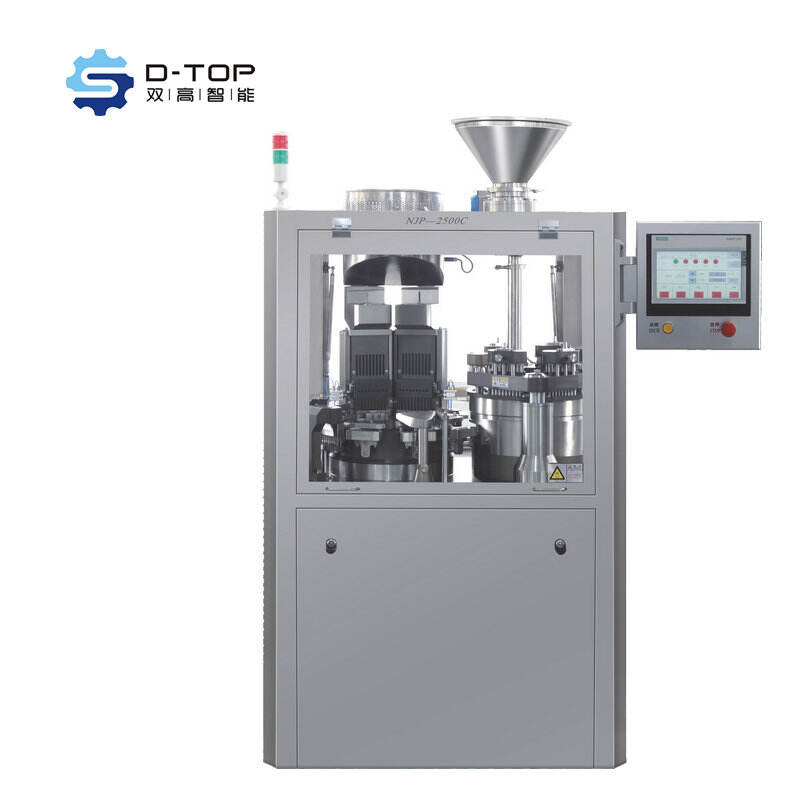Understanding the Role of Modern Pharmaceutical Counting Technology
In today's pharmaceutical industry, precision and accuracy are paramount when dispensing medications. Counter machines have revolutionized the way pharmacies and pharmaceutical facilities handle medication distribution, ensuring each patient receives exactly the prescribed dosage. These sophisticated devices combine advanced optical technology with precise mechanical systems to deliver unparalleled accuracy in pill counting and dispensing.
The implementation of counter machines has transformed pharmaceutical operations, significantly reducing human error while increasing efficiency. From local pharmacies to large-scale manufacturing facilities, these automated solutions provide consistency and reliability that manual counting simply cannot match. The impact on patient safety and operational efficiency has made counter machines an indispensable tool in modern pharmaceutical practice.
Core Components and Functionality of Pharmaceutical Counter Machines
Advanced Optical Recognition Systems
At the heart of modern counter machines lies sophisticated optical recognition technology. These systems utilize high-resolution cameras and specialized sensors to identify and verify each pill's shape, size, and color. The optical components work in real-time, processing thousands of items per minute while maintaining exceptional accuracy levels.
The recognition system employs advanced algorithms that can distinguish between different medications, ensuring that cross-contamination or mixing of different drugs never occurs. This level of sophistication provides an additional layer of safety that is crucial in pharmaceutical dispensing.
Precision Mechanical Components
The mechanical elements of counter machines are engineered to handle medications with the utmost care and precision. Vibrating channels and carefully designed pathways guide pills through the counting process while minimizing physical stress on the medications. These components are typically constructed from pharmaceutical-grade materials that prevent contamination and maintain product integrity.
The integration of smooth mechanical movement with precise timing mechanisms ensures consistent flow and accurate counting, even at high speeds. This mechanical precision is essential for maintaining the physical quality of medications while achieving optimal counting efficiency.
Enhancing Accuracy Through Automated Verification
Multi-Point Verification Systems
Counter machines employ multiple checkpoints throughout the counting process to ensure accuracy. Each pill passes through several verification stages, from initial detection to final count confirmation. This redundancy in checking mechanisms significantly reduces the possibility of counting errors and provides documentation for quality control purposes.
The verification process includes weight verification, optical confirmation, and sometimes even chemical composition analysis, depending on the sophistication of the system. This comprehensive approach to verification sets counter machines apart from traditional counting methods.
Real-Time Error Detection
Modern counter machines are equipped with real-time error detection capabilities that can identify and flag potential issues immediately. Whether it's a damaged pill, foreign object, or counting discrepancy, these systems can halt operations instantly when anomalies are detected, preventing potential dispensing errors.
The ability to catch and correct errors in real-time not only improves accuracy but also helps maintain efficient operations by addressing issues before they can impact larger batches or subsequent processes.
Integration with Pharmacy Management Systems
Digital Workflow Enhancement
Counter machines seamlessly integrate with modern pharmacy management software, creating a digital ecosystem that enhances overall workflow efficiency. This integration allows for automatic record-keeping, inventory management, and prescription tracking, all while maintaining precise counting accuracy.
The digital connectivity enables pharmacies to maintain detailed records of all counting operations, creating an audit trail that supports quality assurance and regulatory compliance. This integration also facilitates more efficient inventory management and helps prevent stockouts of critical medications.
Data Analytics and Reporting
The integration of counter machines with management systems provides valuable data analytics capabilities. Pharmacies can track counting accuracy rates, processing speeds, and inventory levels in real-time. This data-driven approach enables continuous process improvement and helps identify potential areas for optimization.
Advanced reporting features allow pharmacy managers to monitor performance metrics and make informed decisions about workflow optimization and resource allocation. The ability to analyze trends and patterns in counting operations contributes to more efficient and accurate medication dispensing.
Maintenance and Calibration Requirements
Regular Calibration Protocols
To maintain optimal counting accuracy, counter machines require regular calibration and verification. Established protocols ensure that counting mechanisms remain precise and reliable over time. These calibration procedures typically include testing with standard samples and adjusting various parameters to maintain optimal performance.
The importance of following manufacturer-recommended calibration schedules cannot be overstated, as it directly impacts counting accuracy and machine longevity. Professional calibration services often provide documentation that supports regulatory compliance and quality assurance programs.
Preventive Maintenance Strategies
Implementing comprehensive preventive maintenance programs is crucial for maintaining the accuracy and reliability of counter machines. Regular cleaning, component inspection, and performance testing help prevent potential issues before they can impact counting accuracy.
Maintenance schedules should be tailored to usage patterns and environmental conditions, ensuring that machines continue to perform at optimal levels. This proactive approach to maintenance helps minimize downtime and extends the operational life of the equipment.
Frequently Asked Questions
How accurate are pharmaceutical counter machines?
Modern counter machines typically achieve accuracy rates of 99.9% or higher when properly maintained and calibrated. This exceptional accuracy is achieved through multiple verification systems and advanced optical recognition technology.
What types of medications can counter machines process?
Counter machines can handle most solid oral medications, including tablets, capsules, and gel caps. However, specific capabilities may vary by model and manufacturer. Some specialized machines can also count oddly shaped or unusually sized medications.
How do counter machines handle cross-contamination prevention?
Counter machines utilize separate counting channels and automated cleaning systems to prevent cross-contamination between different medications. Many models also feature removable components that can be thoroughly sanitized between counting operations.
What happens if a counter machine detects an error?
When an error is detected, counter machines typically halt operations immediately and alert operators through visual and audible signals. The affected batch is usually quarantined for inspection, and the issue must be resolved before counting operations can resume.

